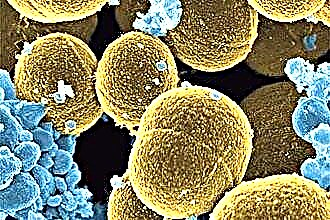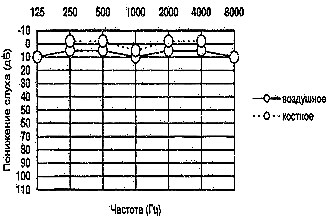Acute inflammation that is concentrated in one of the paranasal sinuses is called sinusitis. This disease affects both children and adults of both sexes equally. Often, the symptoms of sinusitis are confused with the manifestations of the flu and colds, so an accurate diagnosis can be made only after a doctor's examination. How to treat sinusitis at home? What can be opposed to such, though not fatal, but unpleasant ailment?
Characteristic features of the disease
 Localization of the inflammatory process can occur in one or more paranasal sinuses. Impaired ventilation of the sinus (sinus) leads to the accumulation of mucus within it. Blocking its outflow is fraught with the appearance of puffiness and extensive infectious foci, which also negatively affect the functioning of the organs of sight and hearing.
Localization of the inflammatory process can occur in one or more paranasal sinuses. Impaired ventilation of the sinus (sinus) leads to the accumulation of mucus within it. Blocking its outflow is fraught with the appearance of puffiness and extensive infectious foci, which also negatively affect the functioning of the organs of sight and hearing.
The main reason for the appearance of sinusitis is a protracted or untreated rhinitis (this is also its main symptom). In addition, the inflammatory process can occur against the background of other infectious-type ailments - flu, colds, measles, and so on. Moreover, it is they who are a kind of trigger that leads to pathological changes within the paranasal sinuses.
Depending on the location of the infectious focus, sinusitis is divided into the following types:
- Sinusitis is a disease in which the paranasal sinus becomes inflamed. In most cases, sinusitis acts as a complication of acute rhinitis, scarlet fever, flu and other infectious diseases.
- During the development of frontal sinusitis, inflammatory processes begin in the frontal sinuses. Given the clinical manifestations of frontal sinusitis, we can say that this type of sinusitis is more severe than others.
- Ethmoiditis affects the cells of the ethmoid labyrinth and is most common.
- Sphenoiditis is an inflammatory process within the sphenoid sinus (very rarely diagnosed).
Sinusitis can be unilateral or bilateral, affecting one or more paranasal sinuses. The acute form of sinusitis is characterized by the brightness of the manifestation of symptoms. As a rule, its duration does not exceed eight weeks.
If the symptoms of the disease are aggravated, then they practically disappear, we can talk about a chronic form. Chronic sinusitis (like any other chronic disease) has two stages - the stage of exacerbation and remission.
Symptoms
 The specific symptoms of sinusitis depend on the type of sinusitis:
The specific symptoms of sinusitis depend on the type of sinusitis:
- Sinusitis will be acute and have pronounced symptoms. Often, the patient's body temperature reaches 39 degrees, pain appears in the area of the maxillary sinus. When feeling (palpation) of the face or tilting the head, the pain increases. Natural ventilation of the affected sinus is impaired, and problems with breathing through the nose appear. In addition, with sinusitis, abundant nasal discharge can be observed (mucus can be transparent, with a yellowish or greenish tinge).
- As the frontal sinusitis develops, pain is concentrated in the frontal region and intensifies during palpation. Nasal breathing is also difficult, there is abundant nasal discharge, visual acuity can be significantly reduced. The body temperature rises to subfebrile values (38-39 degrees). With a certain regularity, headaches appear and are aching in nature.
- In most cases, ethmoiditis (inflammation of the ethmoid labyrinth) accompanies frontal sinusitis or sinusitis. The patient suffers from frequent headaches, discomfort is localized in the area of the bridge of the nose. As for body temperature, it rises to 38 degrees (but not always). Gray mucus is secreted from the nose, the acuity of smell decreases, nasal breathing becomes difficult. In some patients, swelling of the eyelids is clearly visible.
- With sphenoiditis, the pain is well felt in the occipital and parietal regions. As with other types of sinusitis, the temperature may rise. This variety is dangerous for its complications. Sphenoiditis often transforms into retrobulbar neuritis (degradation of the nerve fibers of the eyeballs) and reduces visual acuity.
Treating sinusitis at home
How to cure sinusitis without harming your body? If the treatment of this ailment is to be performed at home, we recommend that you pay attention to the drops. This is a traditional remedy that is actively used for therapeutic purposes.
 A solution based on mummy helps to fight sinusitis well. He came to us from time immemorial from Tibetan medicine. Shilajit therapy involves the periodic introduction of the solution into the nasal cavity (in pharmacies you can buy a two percent solution). You need to drip 3 times a day, 4 drops.
A solution based on mummy helps to fight sinusitis well. He came to us from time immemorial from Tibetan medicine. Shilajit therapy involves the periodic introduction of the solution into the nasal cavity (in pharmacies you can buy a two percent solution). You need to drip 3 times a day, 4 drops.
Sinusitis treatment at home can be done using:
- garlic juice;
- onion juice;
- beet juice;
- carrots;
- Kalanchoe;
- aloe.
Thus, you can create an incredibly powerful bactericidal effect and quickly remove the swelling of the mucous membrane. The juice of the above products is also instilled into the nose no more than 3-4 times a day.
You can also treat sinusitis at home in adults with inhalation. For these purposes, essential oils of coniferous trees and eucalyptus are actively used. You can add a few drops of oil to hot water before the procedure. If it is not possible to use the hot inhalation method, saturate the fabric with essential oil and place it in the nasal cavity for a while.
 Good results can be achieved by regularly massaging and rubbing the facial part of the inflamed sinus. When massaging, you need to act in a circular motion on the areas of the browbones and cheekbones. Rubbing involves the use of mustard oil. Places near the nasal wings and the bridge of the nose should be rubbed several times a day. This improves blood flow and reduces inflammation.
Good results can be achieved by regularly massaging and rubbing the facial part of the inflamed sinus. When massaging, you need to act in a circular motion on the areas of the browbones and cheekbones. Rubbing involves the use of mustard oil. Places near the nasal wings and the bridge of the nose should be rubbed several times a day. This improves blood flow and reduces inflammation.
Don't forget about ointments and applications. They have the same healing effect and at the same time have a number of tangible benefits. Unlike drops, the ointment can be spread evenly over the entire nasal cavity. And the active substances act on the mucous membrane much longer.
In order to quickly deliver a drug to the target organ, it is not at all necessary to give injections or take medications orally. Pay attention to the applications based on medicinal mixtures and solutions. Steamed medicinal herbs can be used as such. Mixtures of propolis and camphor oil, cakes of honey and rye flour (they have a warming effect) can also be applied to the area of the affected paranasal sinus.
Flushing
What else can you say about symptoms and home treatment? A very good way to clear mucus from the nasal passages and relieve swelling is flushing. For these purposes, an ordinary sea salt solution will do. Take one glass (about 200 milliliters) of warm water and gradually dissolve a teaspoon of sea salt in it. To enhance the therapeutic effect, you can add a couple of drops of iodine.
 There is no way to make it yourself? It does not matter, ready-made solutions in a wide range are sold in all pharmacies.
There is no way to make it yourself? It does not matter, ready-made solutions in a wide range are sold in all pharmacies.
There are several ways to do home rinsing. The most common and effective will be the following:
- Lean forward slightly and turn your head to the side. The healing solution is poured into the nasal cavity smoothly and slowly (a small teapot or a regular syringe is suitable for this).In this case, the liquid should flow freely through the nostril, which is located below. At the final stage of rinsing, you should stand a little with your head tilted and wait until all the solution has flowed out.
- The second way is simpler. Take warm water with the solution into your palms and draw it into your nostrils, inhaling through your nose. Next, pinch both nostrils with your fingers and bend in different directions several times. Turn your head to the side and gently exhale all the liquid from the nostrils. This is a great option for those who do not have a kettle, syringe, or other items to flush with.
As a medicinal solution, not only sea salt can be used, but also a decoction of chamomile, St. John's wort, calendula.
Just before the procedure, make sure that there is no nasal congestion and that the nose is breathing at least a little. Otherwise, the procedure will be ineffective. If the nose is completely clogged, use a vasoconstrictor medicine before rinsing.
What is forbidden to do
 According to doctors, if a patient is diagnosed with sinusitis, he is strictly prohibited from going to the bathhouse. High temperatures lead to excessive overheating of the body. For the patient, this is the strongest stress. Of course, under normal conditions (when a person is completely healthy), such a short-term exposure is very useful. Moreover, this should be done with a certain regularity. However, with all types of sinusitis (especially in the acute form), you cannot visit the bathhouse and sauna. Any thermal procedures can only harm the body. This is easily explained by general weakness. It appears against the background of the poisoning of the body with the waste products of bacteria, which are concentrated within a particular paranasal sinus. Intoxication disrupts the body's natural thermoregulation process. Therefore, even a seemingly insignificant thermal effect is fraught with heatstroke.
According to doctors, if a patient is diagnosed with sinusitis, he is strictly prohibited from going to the bathhouse. High temperatures lead to excessive overheating of the body. For the patient, this is the strongest stress. Of course, under normal conditions (when a person is completely healthy), such a short-term exposure is very useful. Moreover, this should be done with a certain regularity. However, with all types of sinusitis (especially in the acute form), you cannot visit the bathhouse and sauna. Any thermal procedures can only harm the body. This is easily explained by general weakness. It appears against the background of the poisoning of the body with the waste products of bacteria, which are concentrated within a particular paranasal sinus. Intoxication disrupts the body's natural thermoregulation process. Therefore, even a seemingly insignificant thermal effect is fraught with heatstroke.
Sinusitis can be resisted at home, but this must be done carefully, deliberately and only after consulting your doctor. This is especially true for the treatment of sinusitis in young children.
In order to choose the right treatment tactics, it is necessary to accurately establish the cause of the disease and localize the inflammatory process. And this can be done only after diagnosis. Therefore, before starting a rehabilitation course, always consult a doctor.



